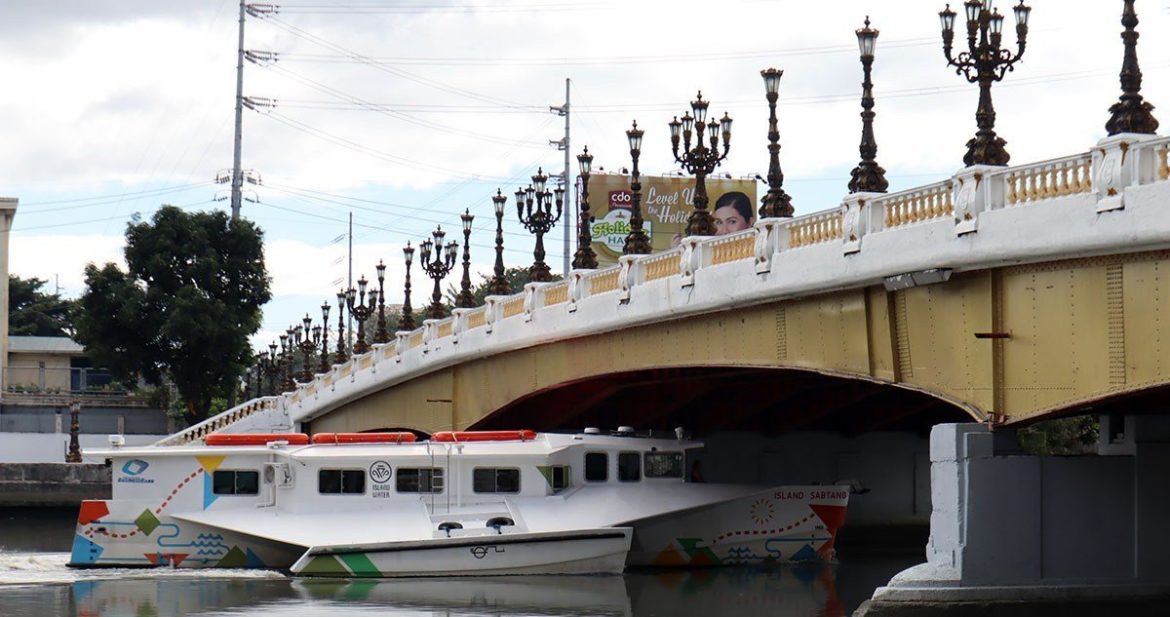Pasig River is well-known for it’s polluted waters and have been on rehabilitation since the early 1990’s. So far, the rehabilitation of the river is positively progressing and now it can be accessible by boats.
Pasig River Ferry
Recently, the Depertment of Tourism (DoT) and Metro Manila Development Authority (MMDA) offered a new fun way to explore Metro Manila for tourist and locals alike – to launch the Pasig River Ferry!

The idea came about between Tourism Secretary Bernadette Romulo-Puyat and Manila Mayor Francisco “Isko Moreno” Domagoso.
The project aims to become a tourist attraction but also to ease the traffic flow. Currently there are 57-seater ferries in the current fleet has five more boats. Three of these can seat 36 passengers while the other two can serve 16 passengers.
“We’re reviving Pasig River as an alternative mode of transportation,” Berna discloses. “Abroad, people use the river to commute.”
Also, according to current Pasig City Mayor Vico Sotto, “If everything goes well with the MMDA and the river ferry runs smoothly, we’re willing to buy more.”
Start of Water Pollution
In the 1930s, observers noticed the increasing pollution of the river, as fish migration from Laguna de Bay diminished. People ceased using the river’s water for laundering in the 1960s, and ferry transport declined.

By the 1970s, the river started to emanate offensive smells as a result of waste from swine and poultry establishments in the area where protected Marikina watershed is located (Pinugay, Baras, Rizal) and in the 1980s, fishing in the river was prohibited.
By the 1990s, the Pasig River was considered biologically dead.
Water Rehabilitation
Efforts to revive the river began in December 1989 thus, the Pasig River Rehabilitation Program (PRRP) was established and with the Department of Environment and Natural Resources (DENR) as the main agency with the coordination of the Danish International Development Assistance (DANIDA).
In 1999, former President Joseph Estrada signed Executive Order No. 54 publishing the Pasig River Rehabilitation Commission (PRRC) to replace the old PRRP with additional expanded powers such as managing of wastes and resettling of informal settlers (squatters).
Now, the current Philippine President Rodrigo Duterte have released an Executive Order 93. The disestablishment of PRRC and transferred the river’s rehabilitation to the Department of Environment and Natural Resources (DENR).

While the past attempts to clean up the Pasig River were not all that successful, a more earnest government cleaning-up started last year.
The Pasig River
Pasig River is the main river in Metro Manila that connects Laguna de Bay and Manila Bay. It is approximately 27 km long with an average width of 91 meters and depth ranging from 0.5 to 5.5 meters.

The main Pasig River passes through five cities (Taguig, Pasig, Makati, Mandaluyong and Manila, and also the municipality of Taytay, Rizal. The river system has 4 major tributaries (Marikina, Pateros-Taguig, Napindan and San Juan) and 43 minor tributaries mostly located in Manila.
According to Lovely Romulo, former Chairperson, National Council on Disability Affairs “I don’t smell anything anymore. The ferry ride down the river is a lot more pleasant now.”
Future of Pasig River & Ferry Cruise
Reviving the Pasig River and launching of Pasig River Ferry is a big accomplishment for the Philippines. A lot of opportunities lies within the river spot, making it a great tourist investment. Though the river still has underlying problems like water lilies, unclean water, informal settlers, and over-all river maintenance and management.
As of December 2019, there was still no set fare matrix for the Ferry Cruise. Although in 2014, the ferry service pegged prices around P30 to P50.
Though the project is not yet completed and with the on-going rehabilitation of the river, the ferry is finally here to stay!
Additional Sources: philstar.com, wikipedia.org, wepa-db.net, spot.ph, news.abs-cbn.com
Photo Sources: philstar.com, travel-up.com, sea.mashable.com, pna.gov.ph–Jess M. Escaros Jr.






